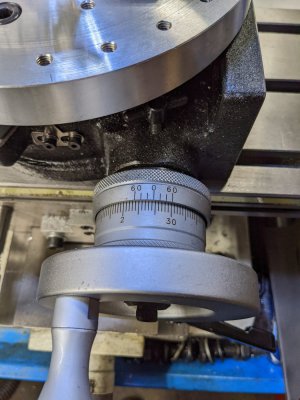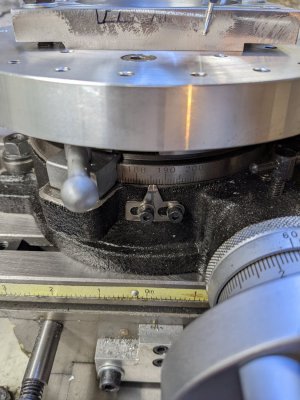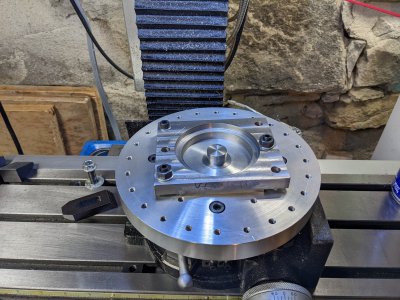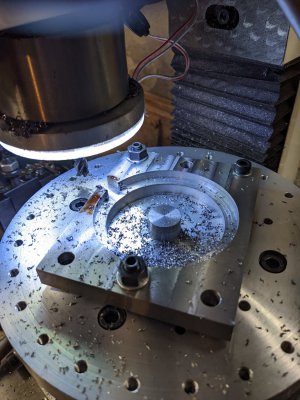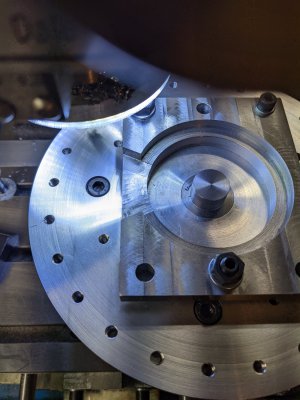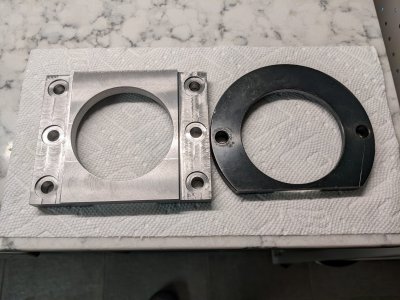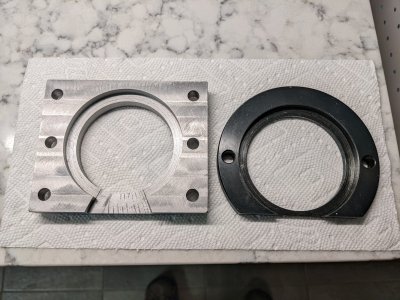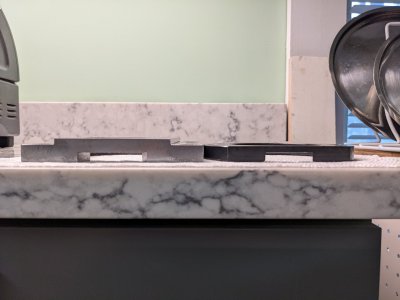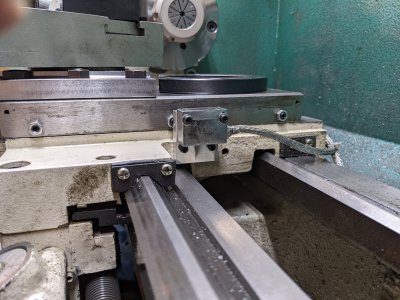Here's the last screw hole being fitted. It's sitting on the mill. Last one on the back left. (Top right in the picture.) Kind of an awkward spot, but got it to work.
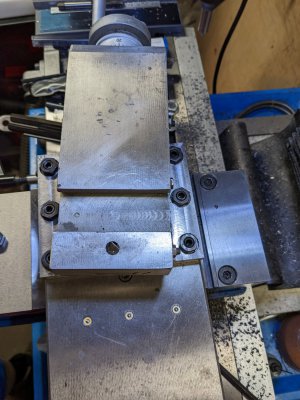
A fit check on the lathe revealed that while there was clearance for the studs and nuts, there wasn't quite enough room for the wrench! The M8 nuts that I had were 13mm across the flats, and my 13mm wrench is a little taller than the supplied Grizzly 14mm wrench. So back to the mill to make the sides thinner by 0.75mm. Used a 1/2" carbide end mill with 0.060 radius.
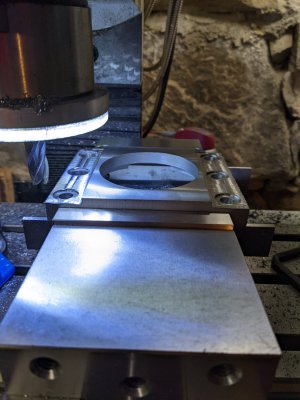
There's nearly 12mm thickness on the flange, so it will be fine. (Flange thickness original: 12.7mm, new: 11.95mm)
Final check that the wrench has clearance on all 6 locations. Pretty happy with how it came out, despite my rookie mistakes.
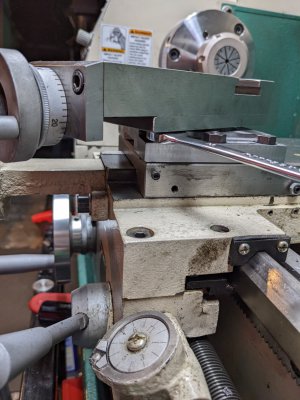
What's left to do? Adding the extra 3 M6 screws for the protractor hold down, and reinstalling everything again, including the cross-slide DRO.
Also needed is to fix the poor alignment of the cross slide DRO head to the mag tape. Need to make a taper piece (or something else) to fix the tilt. The read head is tilted 4-5 degrees with respect to the ways. This is because the mount is attached to the saddle which is cast. It is about 4 degrees or so from vertical. What is there is pretty ad hoc, difficult to adjust and does not address the alignment issue. What I'd like is something with locking adjustment. Probably think about it today and see if I can implement it.


